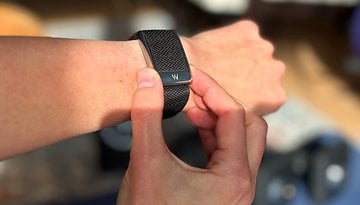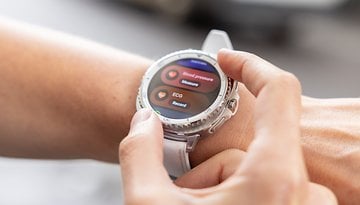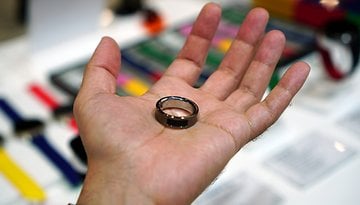Menstrual Health: Why We Should Be Tracking Our Cycles
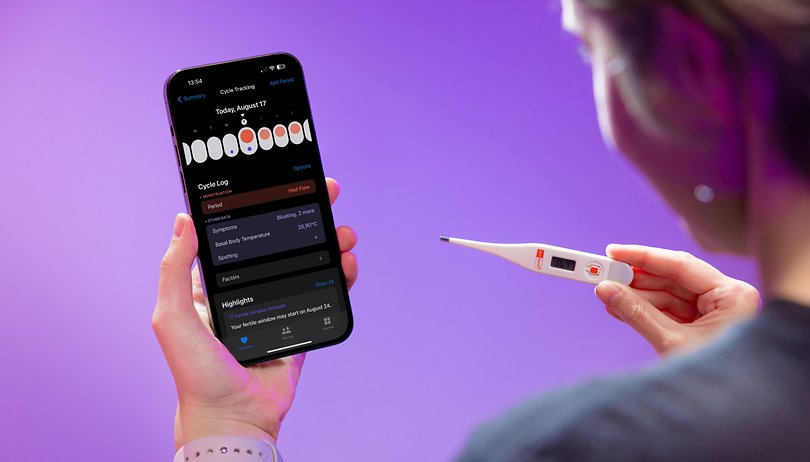

What is menstruation cycle tracking? What are the potential benefits of being aware of it? This is the first article in a series on women's health, in which I'll answer those questions and also delve into the history of cycle tracking and the role of technology in advancing it.
As a woman, I wasn't always interested in my body. At school, my menstruation cycle was treated as taboo, something that you experience, but shouldn't discuss openly. From what I remember, even in biology classes, lessons on the reproductive system were punctuated by giggles and embarrassed looks. Reflecting on this now, I realize how unfortunate it was.
Growing up, I didn't connect with my body the way many women do. When you disclose to a gynecologist that you're a lesbian, oftentimes you're met with the "so you don't need to worry about getting pregnant" response. And since my menstrual cycle was regular, I truly didn't worry too much.
Throughout my life, these are just a few of the preconceived notions I, and likely many women, have had regarding our bodies.
Recently, I discovered a book by Dr. Mindy Pelz called "Fasting like a Girl," and my perspective on my body transformed. I began to flirt with fasting around 2014 after watching the BBC documentary "Eat, Fast and Live Longer," which discussed Michael Mosley's 5:2 diet. The results captivated me.
Over the years, intermittent fasting gained traction, and it was encouraging to see more people adopting it. While I experienced some positive health changes, I never achieved the profound benefits fasting often promised. Especially the sharp, fast thinking and the energy boost. So, I somewhat gave up.
Fast-forward to 2020, following a dietician's concerning diagnosis, I was compelled to make some dietary changes. At that point, I wasn't focused on intermittent fasting. The stress of a demanding management role meant I wasn't giving due attention to my diet.
At the time, a friend introduced me to the "Longevity Diet" by Dr. Valter Longo, leading me to the Fasting-Mimicking Diet (FMD)—a five-day fasting regimen where one doesn't only drink water but consumes a very specific, limited amount of food. As the name suggests, it's a diet that mimics the fasting process, tricking the body into a fasting state and offering all the benefits of it.
I felt significantly better doing the FMD every three to four months, especially when teaming up with a male friend for support. However, I noticed our experiences varied from time to time.
One of my fasting partners later shared a podcast episode about the differences in fasting effects between male and female bodies, featuring Dr. Mindy Pelz. In hindsight, it's evident that men and women would have distinct experiences, given our different biological systems. However, I was initially taken aback by this revelation, a feeling that underscores the prevalence of a one-size-fits-all (often male-centric) approach in many areas of life.
Ok, so now you might wonder, what does fasting have to do with the menstrual cycle? As it turns out, quite a lot.
What is menstrual cycle tracking?
At its core, cycle tracking involves monitoring and recording various aspects of a person's menstrual cycle. This includes observing and noting symptoms like basal body temperature, consistency of cervical mucus, and menstrual bleeding to understand the different phases of the menstrual cycle, namely the follicular phase, ovulation, and the luteal phase.
| Duration | What happens? | |
|---|---|---|
| Follicular Phase | Starts on the first day of menstruation and lasts until ovulation. | This phase is characterized by the maturation of follicles in the ovaries, stimulated by the follicle-stimulating hormone (FSH). As these follicles mature, they produce estrogen, which stimulates the thickening of the endometrial lining in the uterus, preparing it for a potential pregnancy. |
| Ovulation | Typically occurs around the middle of the menstrual cycle, though the exact timing can vary. | Triggered by a surge in luteinizing hormone (LH), ovulation is when a mature follicle releases an egg into the fallopian tube. This egg is available for fertilization by sperm for about 12–24 hours. |
| Luteal Phase | Begins after ovulation and lasts until menstruation starts. | After the egg is released during ovulation, the ruptured follicle transforms into the corpus luteum, which produces progesterone. Progesterone further prepares the endometrial lining for the potential implantation of a fertilized egg. If fertilization doesn't occur, the corpus luteum breaks down, leading to a decrease in progesterone and eventually the onset of menstruation. |
| Source: https://helloclue.com/articles/cycle-a-z/the-menstrual-cycle-more-than-just-the-period | ||
Bear in mind that the length and experience of each phase described in the table above can vary widely among individuals, and factors such as age, health, and lifestyle can influence the menstrual cycle. This makes it even more relevant to track your own cycle rather than relying on preset numbers."
Personally, I find the 3D animation of the different phases of the menstrual cycle on Dr. Paulien Moyaert's channel very easy to understand. So I recommend giving it a watch:
What are the potential benefits of being aware of your menstrual cycle?
The benefits of understanding and tracking one's menstrual cycle are manifold. Reflecting on my previous fasting experience, I realized I was fasting without considering the unique hormonal patterns of my body. This oversight seems common among many individuals.
In the fasting community, a one-size-fits-all approach often dominates. As a result, the expected benefits of fasting are typically based on its effects on the male hormone, testosterone. While women do produce testosterone, it's at different levels compared to men. To truly harness the benefits of fasting, I needed to consider hormones like progesterone and estrogen, which requires attention to my menstrual cycle.

For me, monthly cycle tracking is intrinsically tied to my overall health and well-being. That said, recognizing the patterns of one's menstrual cycle has broader implications. Here are at least five additional ways individuals can benefit from cycle tracking:
- Fertility awareness: Many women use cycle tracking to identify their fertile window, which assists them in either trying to conceive or avoiding pregnancy.
- Predicting menstrual periods: With cycle tracking, women can more accurately anticipate the start of their next period, helping them to prepare.
- Understanding the body’s rhythms: This awareness provides insights into how one's cycle might influence mood, energy levels, appetite, and more.
- Health monitoring: Regular tracking can detect any anomalies or changes in the menstrual cycle, potentially flagging health concerns.
- Personal empowerment: Gaining a deeper connection and understanding of one's body can lead to increased body literacy and a sense of empowerment.
The history of cycle tracking and the role of technology
For centuries, women have been in tune with their menstrual cycles, using the moon's phases as a natural calendar for tracking. This deep-rooted practice evolved in the 1930s with the advent of the Basal Body Temperature (BBT) method, leveraging the slight rise in a woman's temperature post-ovulation. Subsequent innovations led to calendar-based strategies, such as the rhythm method, allowing to more accurately predict ovulation by charting their cycles.
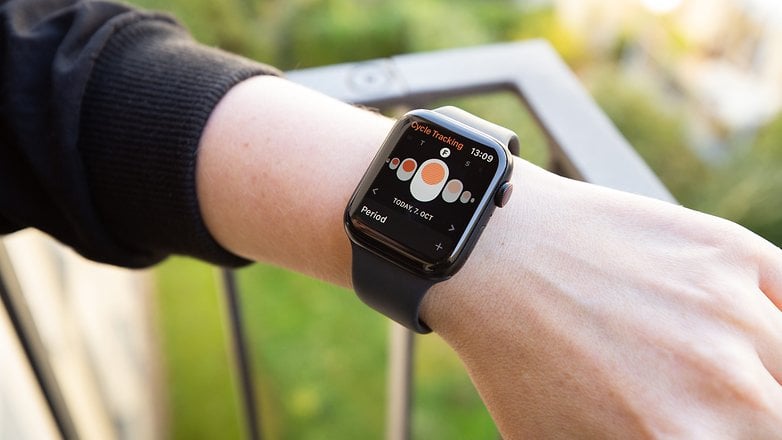
The digital age has revolutionized cycle tracking. With the emergence of computers and smartphones, a plethora of apps emerged to digitalize menstrual records. Now, wearable tech like smartwatches not only monitors body temperature but also heart rate variability, enhancing ovulation predictions.
Modern-day apps like Clue or Natural Cycles, backed by advanced predictive analytics, offer unparalleled accuracy regarding fertility windows and menstrual predictions. Furthermore, integration with comprehensive women's health platforms presents a holistic health perspective, while the rise of online communities in these apps fosters discussions and shared experiences on menstrual well-being.
In summary, women's cycle tracking has a long history, rooted in ancient practices, but has been significantly transformed and enhanced by modern technology. Whether for fertility awareness, health monitoring, or understanding one's body better, cycle tracking offers numerous potential benefits.
What's next?
As previously highlighted, this article marks the beginning of a seven-part series. Throughout this series, I will explore the influence of technology on the health of cis women, non-binary individuals, trans men who menstruate, and others. Also, it's worth mentioning that I'm trying to be as inclusive as my knowledge allows, but I'm still learning how to approach it. So, sorry for previous and future mistakes.
I'll be honing in on cycle tracking features found in wearables such as the Apple Watch Series 8 (read the review) and the Samsung Galaxy Watch 5 Pro (read the review). Additionally, look forward to discussions on data protection related to cycle tracking and ovulation, complemented by interviews with women's health experts.
Below, you will find the first three articles in the series spotlighting Apple's and Samsung's approaches to cycle tracking and ovulation:
- How to Use Menstrual Cycle Tracking on the Apple Watch and iPhone
- How to Use Menstrual Cycle Tracking on the Samsung Galaxy Watch Series
- Unveiling the Differences: Apple vs. Samsung Menstrual Health Features
For those wondering, since focusing on my estrogen and progesterone levels, my fasting journey has taken a significant turn for the better. I can affirmatively state that my latest blood tests are the most promising in years. At last, the invigorating energy often touted by the intermittent fasting community is manifesting. My skin glows, and I feel deeply connected to my body.
However, I'm convinced that this renewed sense of vitality isn't just about fasting; closely monitoring my cycle has been instrumental, a shift that's certainly boosted my overall mood recently. How has it been for you?








